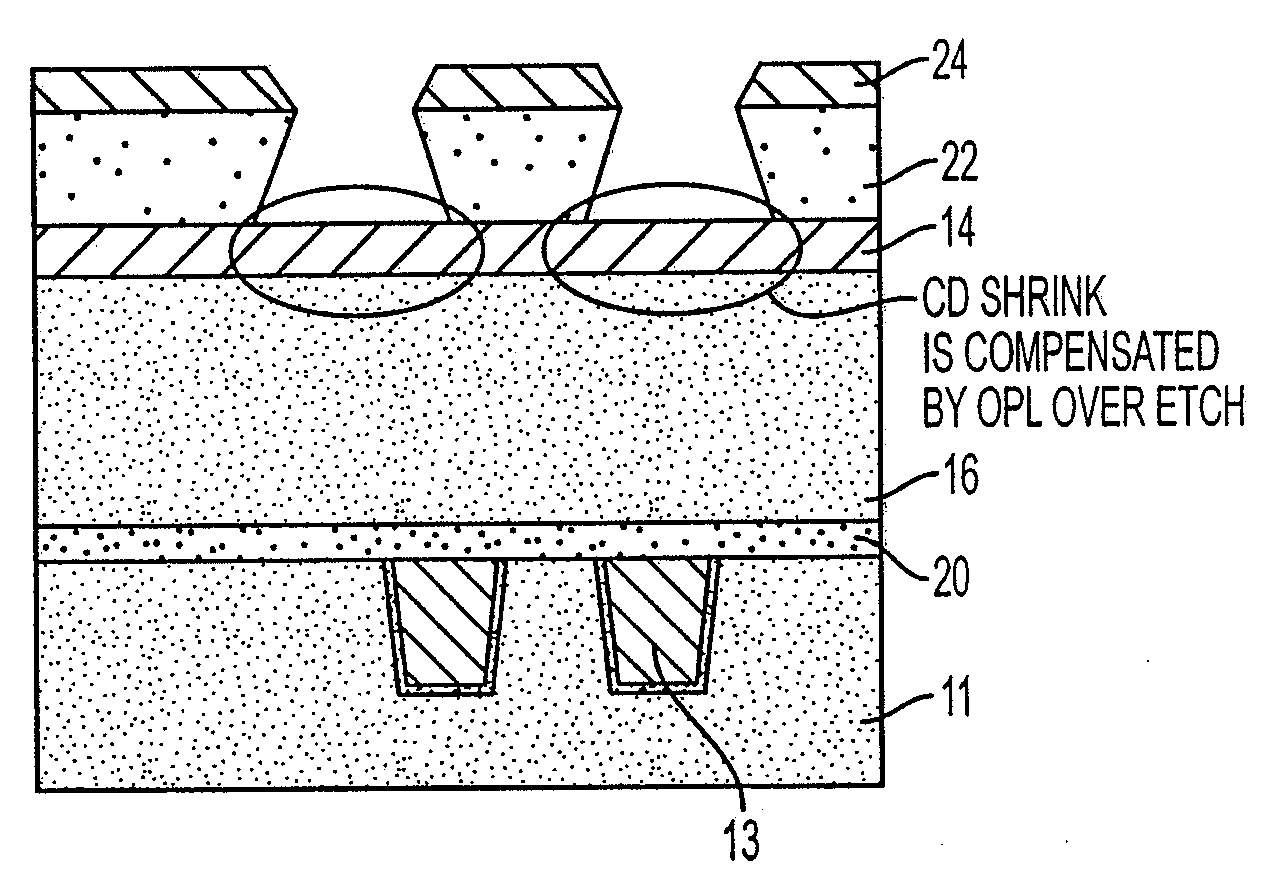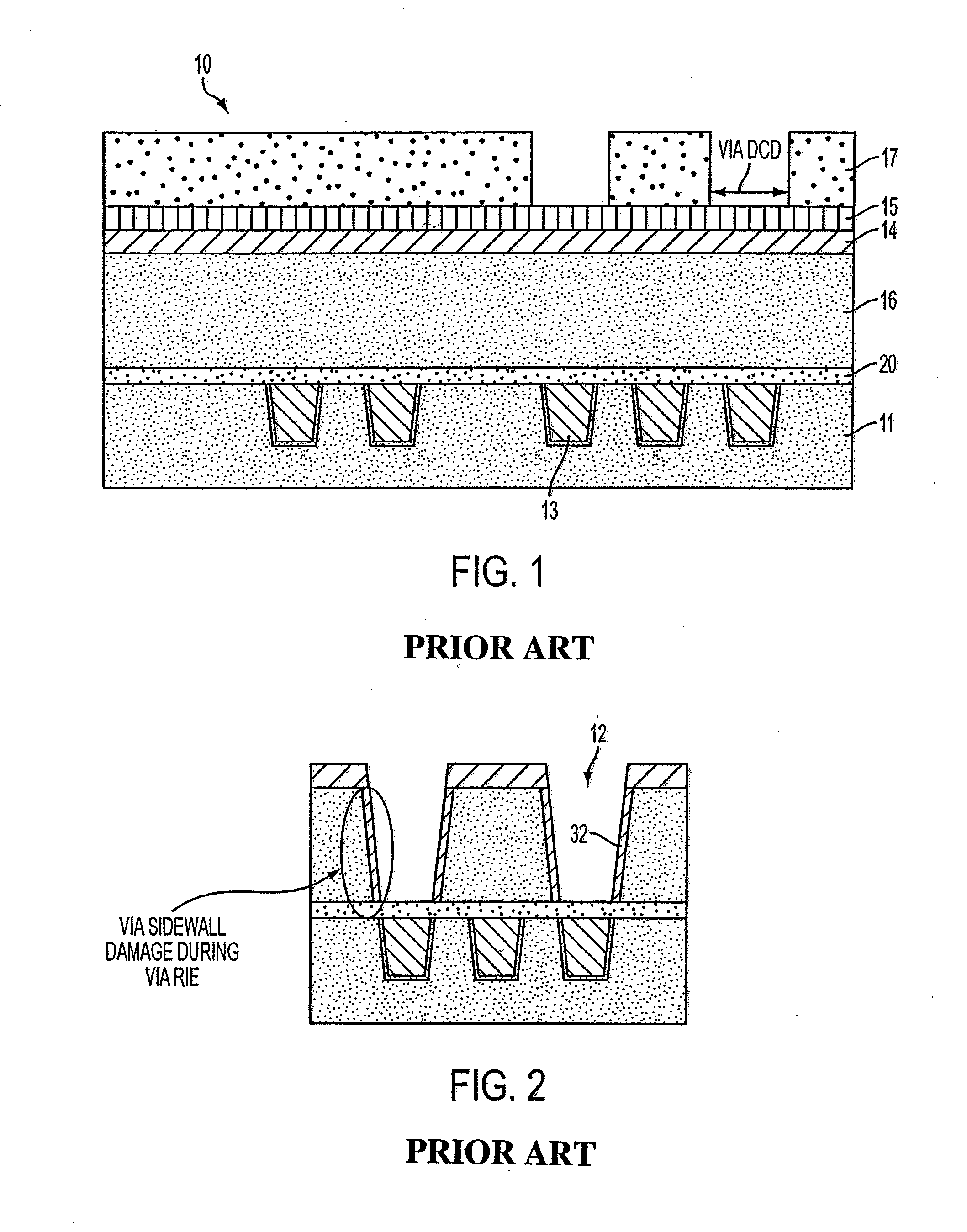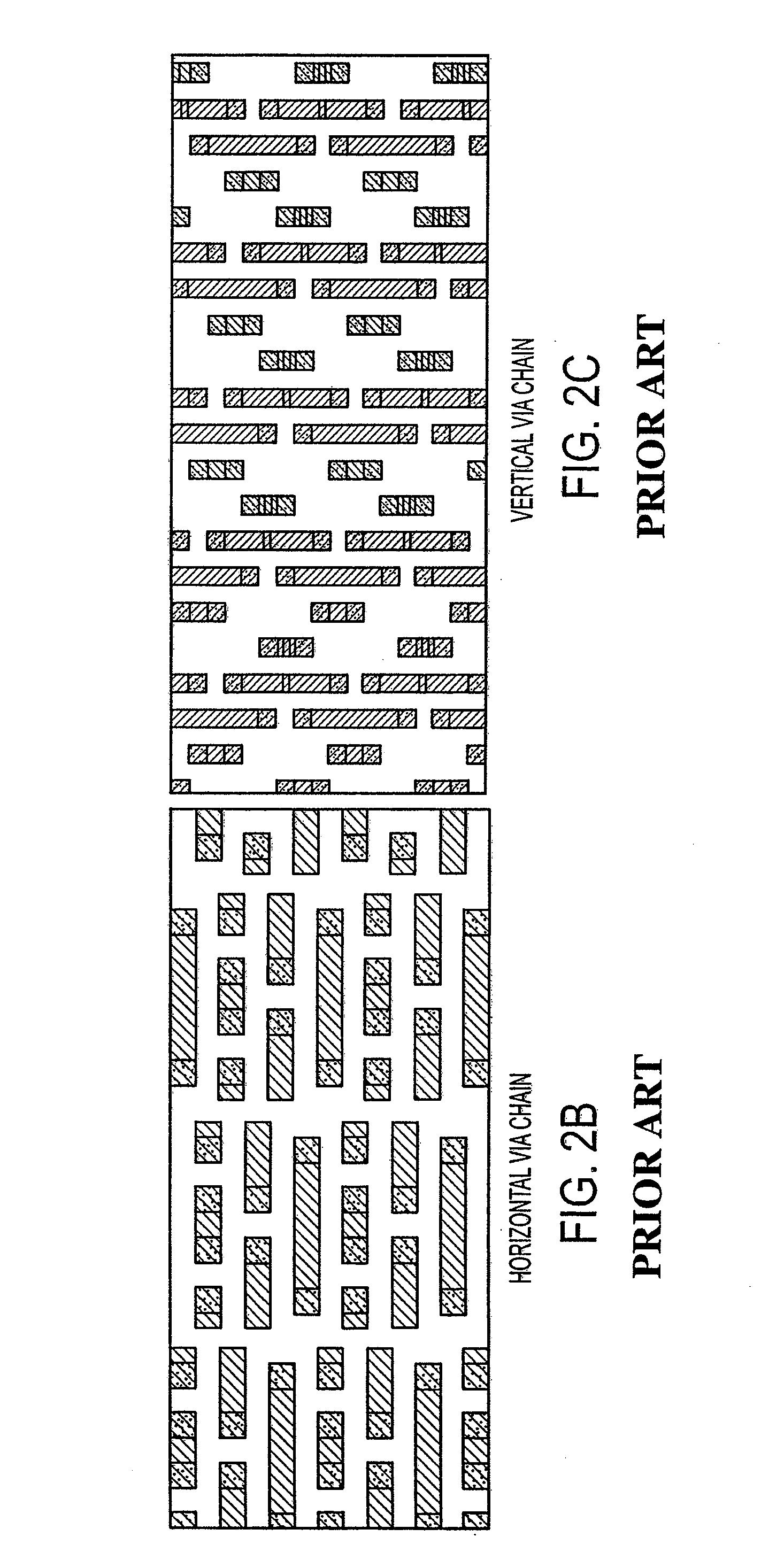Method of minimizing via sidewall damages during dual damascene trench reactive ion etching in a via first scheme
- Summary
- Abstract
- Description
- Claims
- Application Information
AI Technical Summary
Benefits of technology
Problems solved by technology
Method used
Image
Examples
Embodiment Construction
[0044]As described above with reference to a known dual damascene process, via sidewalls are damaged during a via strip step, and then are further damaged by processing steps including the trench etch, etc. To minimize this damage, one aspect of the present invention is directed to a scheme which protects the sidewalls during the trench reactive ion etch (RIE) process, in a via first dual damascene process.
[0045]In one aspect of the present invention, an etch sequence is used on masking structure for example an oxide-like over-layer (OLO) and an OPL integration scheme where the via sidewalls closest to the trench are protected by the OPL during OPL etch, an oxide hard mask open and main etches to avoid any unnecessary exposure to the sidewalls. In addition it has been found that this process does not affect the CD of trench only structures, having no via sidewalls to be concerned with.
[0046]FIG. 8 shows a cross section of a portion of an IC 10 in which vias 12 have already been form...
PUM
 Login to View More
Login to View More Abstract
Description
Claims
Application Information
 Login to View More
Login to View More - R&D
- Intellectual Property
- Life Sciences
- Materials
- Tech Scout
- Unparalleled Data Quality
- Higher Quality Content
- 60% Fewer Hallucinations
Browse by: Latest US Patents, China's latest patents, Technical Efficacy Thesaurus, Application Domain, Technology Topic, Popular Technical Reports.
© 2025 PatSnap. All rights reserved.Legal|Privacy policy|Modern Slavery Act Transparency Statement|Sitemap|About US| Contact US: help@patsnap.com



